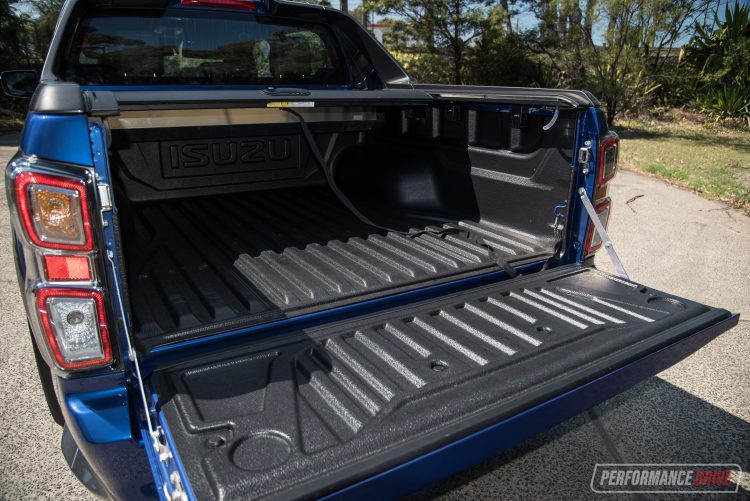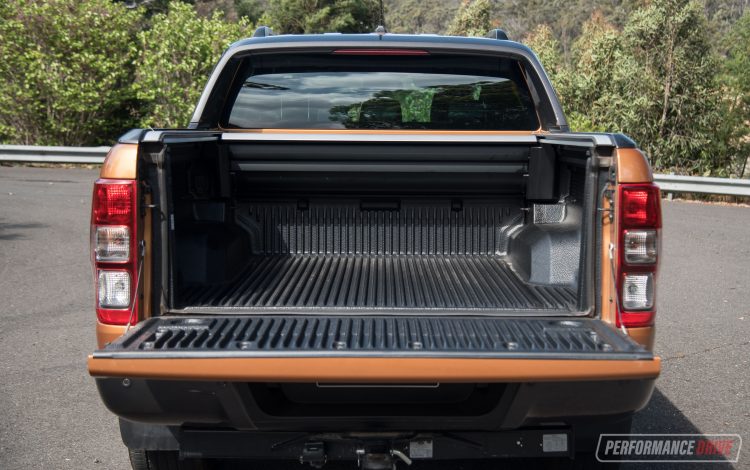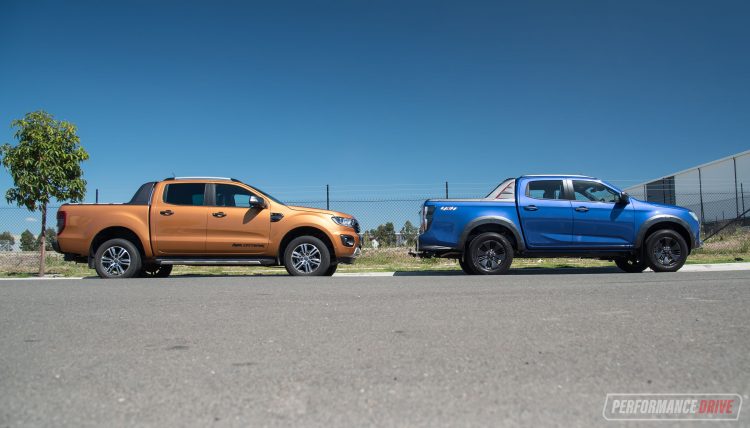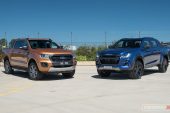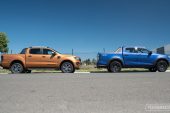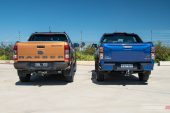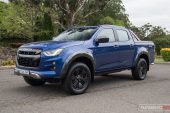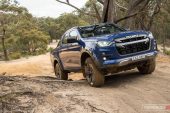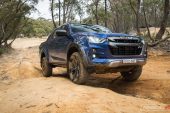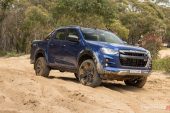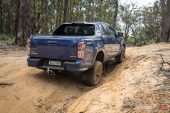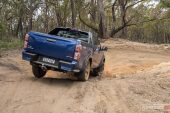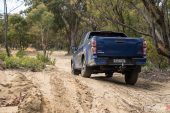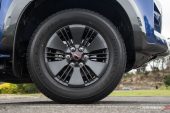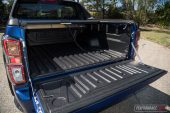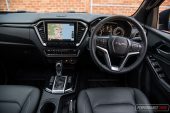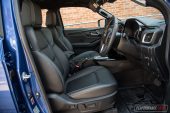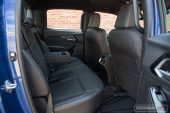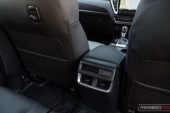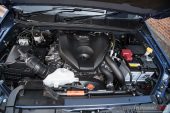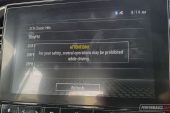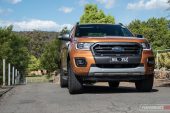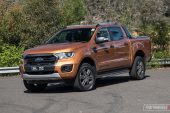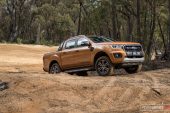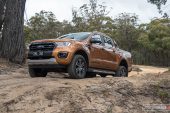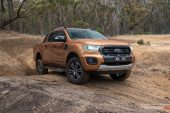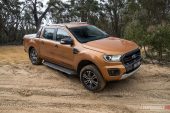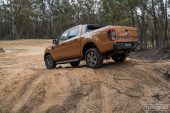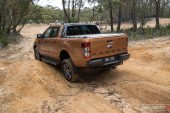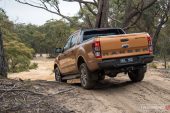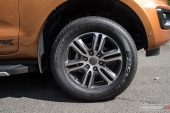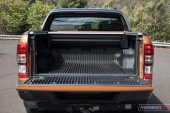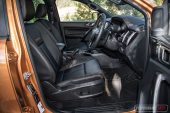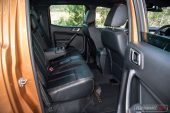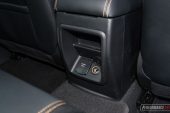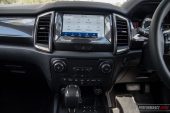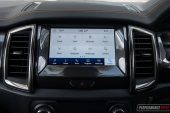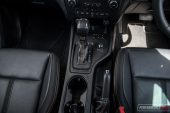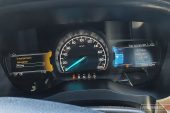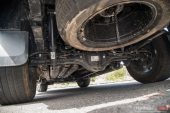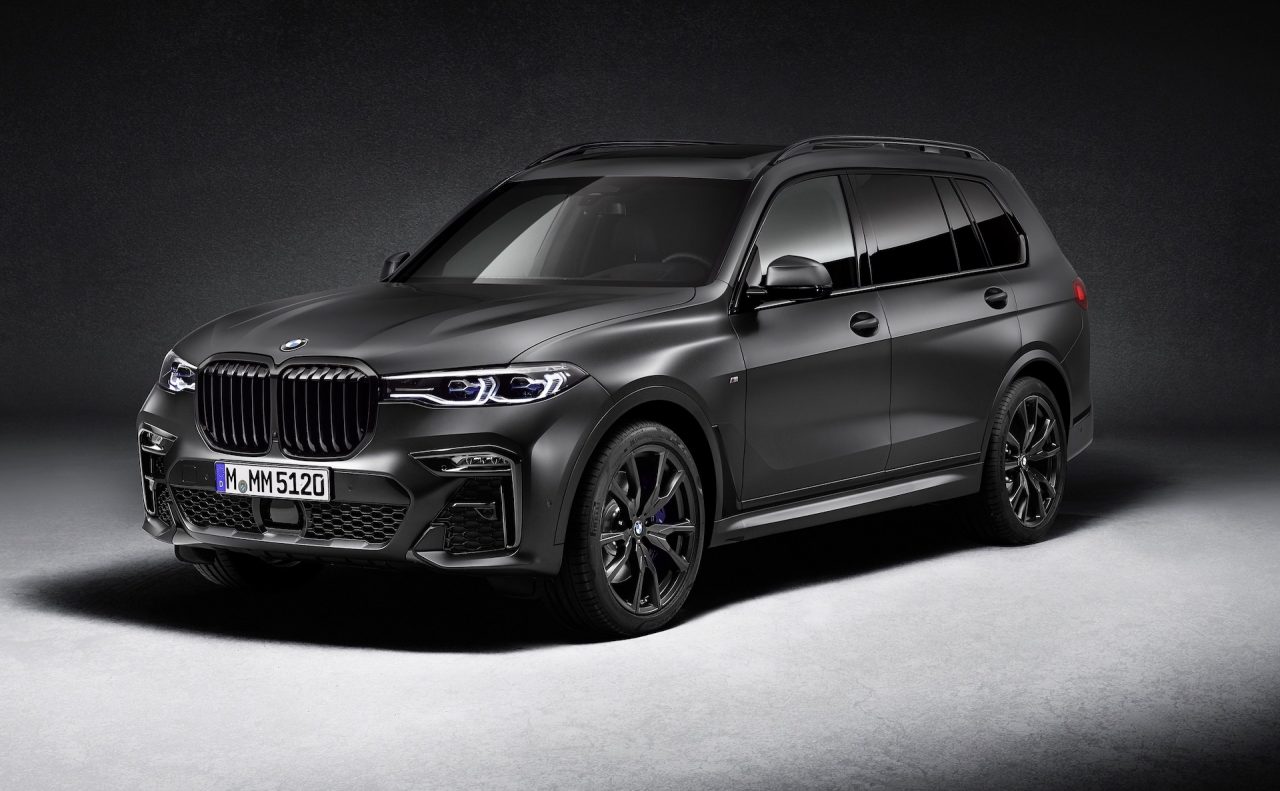Utes have become so popular these days that the manufacturers have had to step up the game in all areas of vehicle development, resulting in more competitive propositions than ever before. It’s hard to tell which model is best. Here we’re pitching the new 2021 Isuzu D-Max X-Terrain against the latest Ford Ranger Wildtrak.

Before we even get started let us just say both of these are brilliant examples of product evolution. They answer to ever-demanding market expectations while retaining a solid set of principles and a hard-working attitude that the segment has always been renowned for.
Ford has applied some updates to its very popular Ranger in the last couple of years. In fact, it is a well-evolved model having originally arrived in current T6 form almost 10 years ago, in 2011. If anything, the Ford Ranger should have no chance in this contest against the almost all-new D-Max. But thanks to its veteran wisdom the Ranger is still very much a highly sought after model – it’s currently the second-best-selling vehicle in Australia, according to VFACTS figures.
So, what are we looking at exactly? We have the new D-Max X-Terrain, which is the flagship model, and the Ranger Wildtrak. The Wildtrak is also the flagship but Ford has a habit of offering a ‘Wildtrak X’, periodically – a fresh version was launched only last week. Even still, you could argue these are the top main variants.
Prices start from $62,900 for the X-Terrain, equipped with a standard six-speed automatic transmission, with no manual available for this trim level. It is around $8000 more expensive than the previous flagship D-Max automatic.
In the gold corner we have the 2.0-litre twin-turbo diesel version of the Wildtrak. Prices start from $65,790, or you can save $1500 by going with the older 3.2-litre turbo-diesel five-cylinder engine option. The 3.2 is available with a manual too, dropping the price a further $2200, to $62,090 (all excluding on-road costs).
2021 Isuzu D-Max X-Terrain vs Ford Ranger Wildtrak – THE SPECS
| Isuzu D-Max X-Terrain | Ford Ranger Wildtrak | |
|---|---|---|
| Engine | 3.0-litre turbo four-cylinder | 2.0-litre twin-turbo four-cylinder |
| Output | 140kW@3600rpm / 450Nm@1600-2600rpm | 157kW@3750rpm / 500Nm@1750-2000rpm |
| Transmission | Six-speed auto | 10-speed auto |
| Drive type | Part-time four-wheel drive, rear locker | Part-time four-wheel drive, rear locker |
| Wheels | F & R: 18×7.5, 265/60 | F & R: 18×8.0, 265/60 |
| ANCAP | Five stars | Five stars |
| Tare weight | 2130kg | 2246kg |
| Power-to-weight | 15.21:1 (kg:kW) | 14.30:1 (kg:kW) |
| Official fuel economy | 8.0L/100km | 7.4L/100km |
| Economy during test | 8.7L/100km | 9.0L/100km |
| Fuel capacity/type | 76L/Diesel | 80L/Diesel |
| Power efficiency | 21.06kW:L/100km | 21.12kW:L/100km |
| 0-60km/h | 4.00 seconds* | 4.31 seconds* |
| 0-100km/h | 9.76 seconds* | 9.36 seconds* |
| 60-110km/h | 7.75 seconds* | 6.84 seconds* |
| 1/4 mile | 16.91 seconds at 131.9km/h* | 16.85 seconds at 134.2km/h* |
| Max acceleration | 0.714g | 0.665g |
| 100-0km/h braking | 3.54 seconds at 42.67 metres* | 3.48 seconds at 43.98 metres* |
| Max deceleration | -1.127g | -1.011g |
| Decibel at idle | 48* | 49* |
| Peak decibel at 60-100km/h | 79* | 79* |
| Priced from | $62,900 | $65,790 |
* Figures as tested by PerformanceDrive on the day. Factory claims may be different
2021 Isuzu D-Max X-Terrain vs Ford Ranger Wildtrak – THE PACKAGE
There’s no doubt about it, the new D-Max interior is a world apart from the old model. Isuzu has applied a much more modern dash, better materials which help enhance cabin acoustics and refinement, and the engineers have improved ergonomics. For example, the driving position is significantly better than before thanks to a tilt-and-reach adjustment for the steering column. There’s also a rather sporty, feel-good three-spoke steering wheel, and the placement of the main controls and furniture feels more natural.
Against the Ranger, well, the Ranger has had these areas covered for years anyway. However, we think the D-Max does win in terms of design, purely from a contemporary perspective. Ford has been presenting its chunky dash layout for a while now, and the rhombus climate control buttons could probably do with an update. The driving position is very good though, and the cabin actually seems more car-like than the upright-style D-Max cabin.
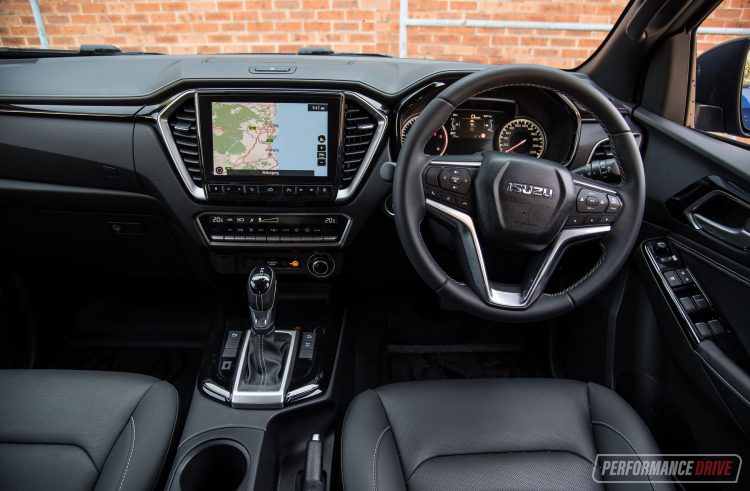
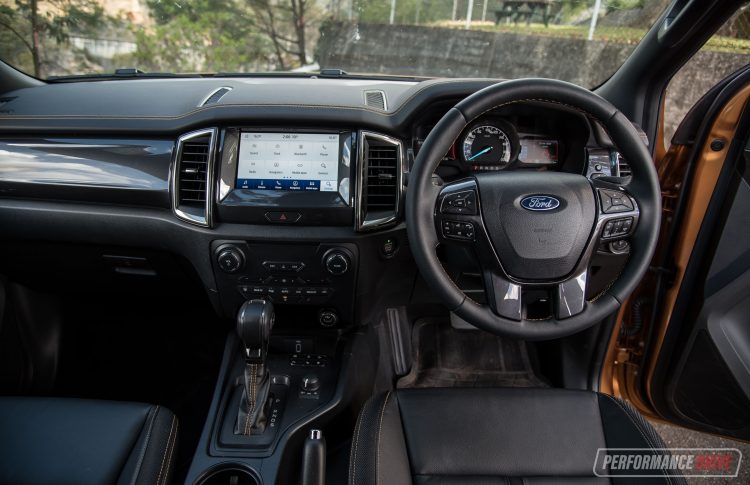
The Isuzu trumps the Ford for its infotainment touch-screen size, measuring 9.0 inches to the Ranger’s 8.0-inch unit. Ford’s SYNC 3 operating system is a little more user-friendly we feel, with in-screen main menu buttons across the bottom providing a quick avenue to the various functions. We also like the volume knob in the Ford over the Isuzu’s plus/minus button control system.
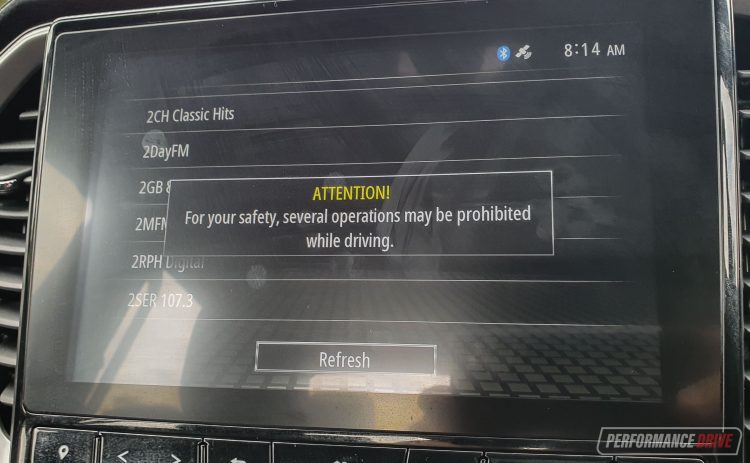
Both offer Android Auto and Apple CarPlay, although, Isuzu seems to be pretty strict in terms of safety, restricting some browsing functions, such as for radio stations, when the car is in motion. It is a bit overkill in our opinion. On that topic, Isuzu has really advanced on its active safety tech, adding low and high speed autonomous emergency braking as standard, along with lane-departure warning and automated steering correction as standard. It’s great to see these systems, but like the media interface, we think they are over-sensitive.
The D-Max X-Terrain features an eight-speaker stereo over the six-speaker unit in the Ford, and we think the Isuzu system produces slightly better clarity and bass overall. Both come with in-built sat-nav, dual-zone climate control, and the Ford adds digital radio.
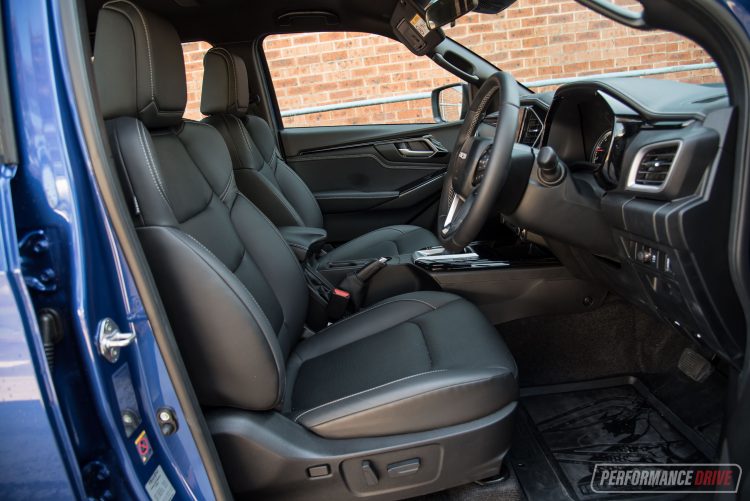
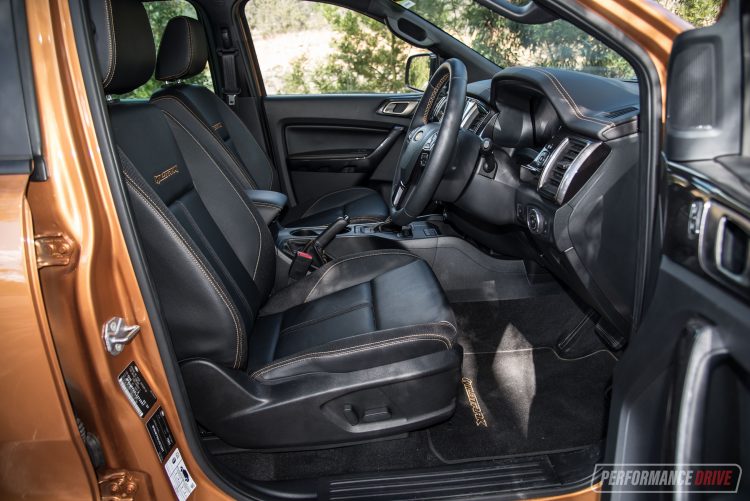
Passenger space is about even between these two. But as mentioned, the D-Max’s cabin is more of an upright orientation, which can make it feel more spacious, open and ‘4WD’ like. In saying that, the Ranger definitely seems wider inside, which obviously benefits shoulder room and the middle rear seat. On the outside the D-Max’s body measures 1880mm wide, while the Ranger is 1977mm wide. Headroom and legroom feels about the same to us, in the front and back, but, yes, there does seem to be extra room for the middle passenger in the Ford.
Comfort in the back is heighten in the D-Max thanks to climate vents on the back of the centre console. There is a single USB port in the back, too. Meanwhile the Ranger, perhaps showing its age, features a 12V socket and an AC household-style plug rated at 230V/130W, with no climate vents on the console. In terms of these test vehicles, the D-Max features durable, jobsite-friendly, thick rubber floor mats while the Ford presents carpet mats.

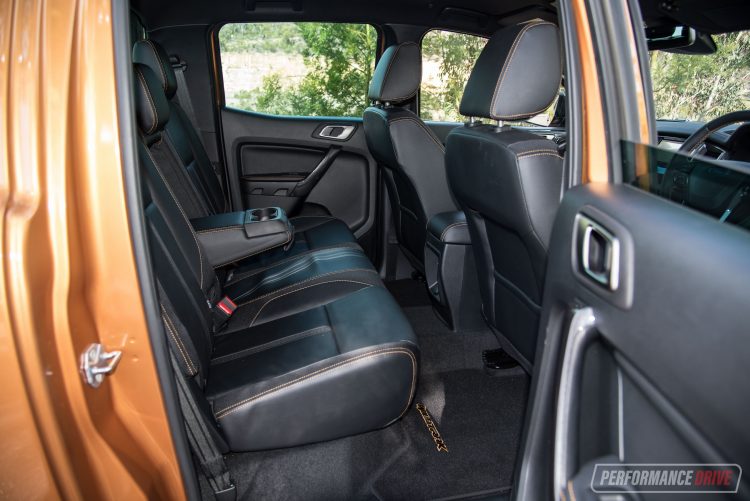
Right at the back, the D-Max’s tray area measures 1570mm long (floor) and 1530mm wide, with 1122mm between the wheel arches. Over in the Ford, the Wildtrak’s tray is 1549mm long and 1560mm wide, with 1139mm between the arches. A basic area calculation means the D-Max offers 2.402m² while the Ford offers a touch more at 2.416m². The payload capacity is 970kg in the D-Max, just overshadowing the 954kg rating in the Wildtrak. Interestingly, the Wildtrak with the 3.2 engine sees the payload drop to 922kg, but jump back up to 940kg with the manual 3.2.
Conveniently, the Wildtrak comes with a power roller shutter for the tub area, which obviously makes life much easier. It’s good to see the D-Max offers a similar metal roller shutter, but it is an older pull-style mechanism that actually requires a bit of muscle to operate.
Both vehicles here offer the maximum legal braked towing capacity of 3500kg. However, taking a look at the gross combination mass (GCM) ratings, the D-Max is superior. Allow us to quickly explain. Take the D-Max X-Terrain’s GCM of 5950kg, then minus the kerb weight of 2130kg, minus 3500kg for towing, and you’re left with 320kg for cargo and passengers.
The Wildtrak 2.0TTD’s GCM is 6000kg, then minus the 2246kg kerb weight, and minus 3500kg, and you’re only left with 254kg for passengers and cargo. Obviously not all trailers/caravans are going to weigh the maximum 3500kg, but it’s clear to see the D-Max does offer more flexibility in this area.
2021 Isuzu D-Max X-Terrain vs Ford Ranger Wildtrak – THE DRIVE
Pop the D-Max’s bonnet and you’ll see a 3.0-litre turbo-diesel four-cylinder engine. It remains as the largest-capacity four-cylinder diesel in the class. With such big pistons, this can benefit towing as engine braking is stronger thanks to a large compression/resistance. It is easy to assume Isuzu has just carried over the old engine, but in fact the ‘4JJ’ unit is almost completely new. It just so happens to maintain the same fundamental formula.
A new turbocharger is one of the main upgrades, taking power up from 130kW to 140kW, and torque is raised from 430Nm to 450Nm. These outputs are great for the D-Max, but like with the interior, Isuzu always seems one step behind the more popular rivals. Of course, outright power and torque are not the be-all and end-all. For us, it’s the enhancements to refinement and quietness that actually matter the most in this instance.
Helping with refinement, the new engine features a double scissor timing gear system which significantly reduces chain rattle, and a new high-pressure injection system that runs a smoother injector cycle. There’s also additional EVA noise insulator foam to restrict engine noises from leaving the engine bay.
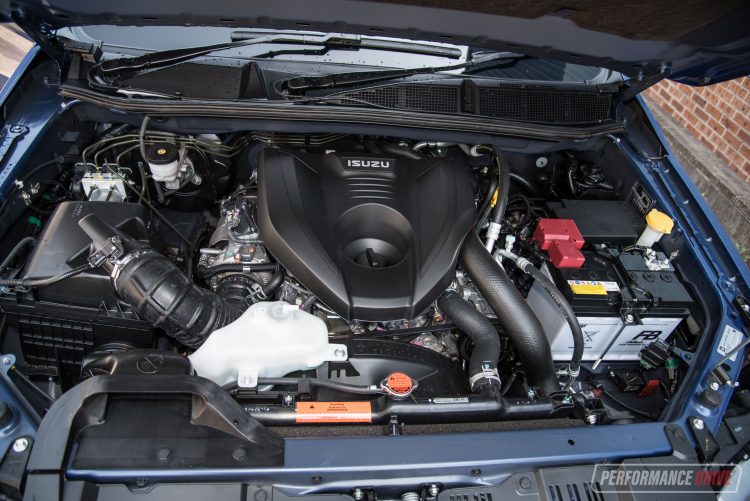
According to our decibel gauge the D-Max now idles (normal operating temp, air-con off) at 48dB, down from 51dB in our last-tested previous-gen D-Max. Acceleration noise levels have also dropped from 83dB to 79dB according to our tests (full throttle across 60-110km/h). These are some very decent gains and they are definitely noticeable behind the wheel. The D-Max now cruises more smoothly and pleasantly along the highway, with none of that harsh, rattling hum you got from the old engine.
Again though, the Ford has been presenting similar performance in this area for a while. In fact, this example tested at 49dB at idle and the same 79dB under acceleration. We guess the additional turbocharger could cause that minor difference in idle noise level in comparison to the Isuzu. What’s more impressive is the Ford produces 157kW and 500Nm, and that’s from a smaller engine.
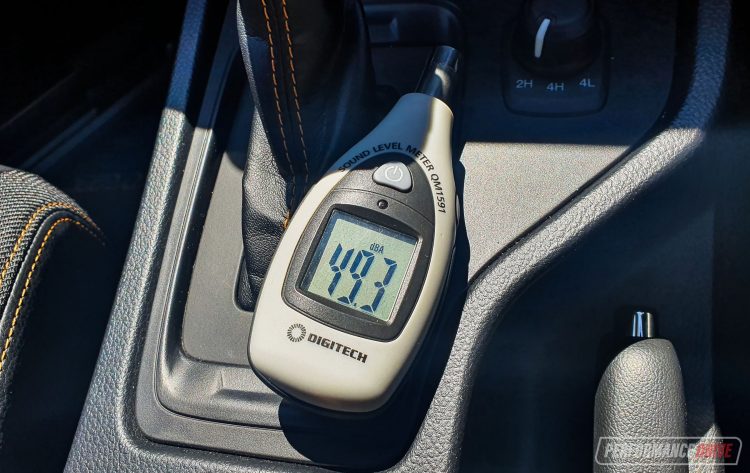
Across the standard 0-100km/h sprint these two were extremely close during our tests. The D-Max’s best result was 9.76 seconds against the Ford’s 9.36 seconds. The extra weight of the Ford is clearly compensated with extra power and torque. However, we’re not a fan of the 10-speed auto transmission in the Ford. During acceleration it almost behaves like a CVT, constantly hovering around the higher rev range. In saying that, the D-Max could probably do with a couple more ratios. If nothing else but to improve economy.
According to the official stats this D-Max variant consumes 8.0L/100km on the combined cycle, making the Ford look like a Prius with its 7.4L/100km rating in this trim level. In the real world, under similar conditions (including performance tests and off-road tests), we recorded an average of 8.7L/100km in the D-Max. That’s a good chunk better than what we recently saw in the LS-U variant (10L/100km), but that did feature a bunch of accessories such as a full bullbar, roof racks and a snorkel. In the Ford, we averaged 9.0L/100km under similar conditions.
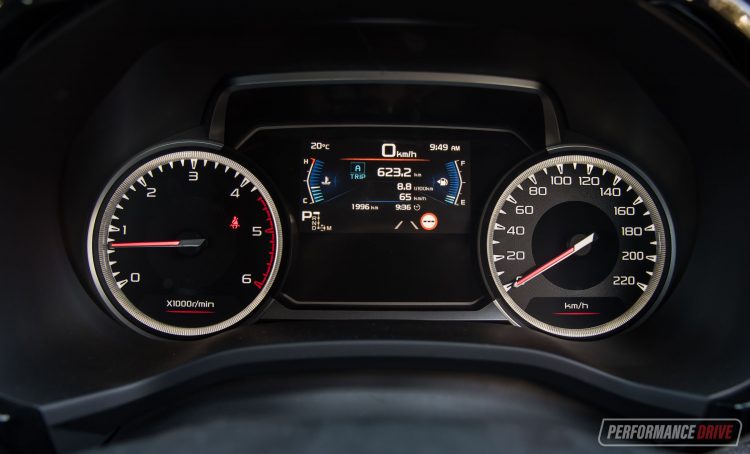
Around corners, both of these contenders show just how far engineering has come for commercial vehicles. They turn like SUVs, offering more than adequate grip and body roll suppression for this type of vehicle. The D-Max seems to turn in more gradually while the Ford feels like it requires fewer turns to go from lock to lock. The new D-Max requires 3.84 turns to go from either end – we couldn’t find the figure for the Ford. The turning circle is 12.7m in the Ford and the D-Max does it in 12.5m.
In terms of comfort, we think the Ford edges ahead. This could be due to its longer wheelbase (3220mm vs 3125mm), helping to iron over bumps and distancing the cabin from the heavy-duty leaf springs at the back. It seems bumps, especially smaller corrugations, have less of an influence on the passenger compartment. It must be said though, these are both among the most comfortable options in this specific class (leaf-sprung rear end).
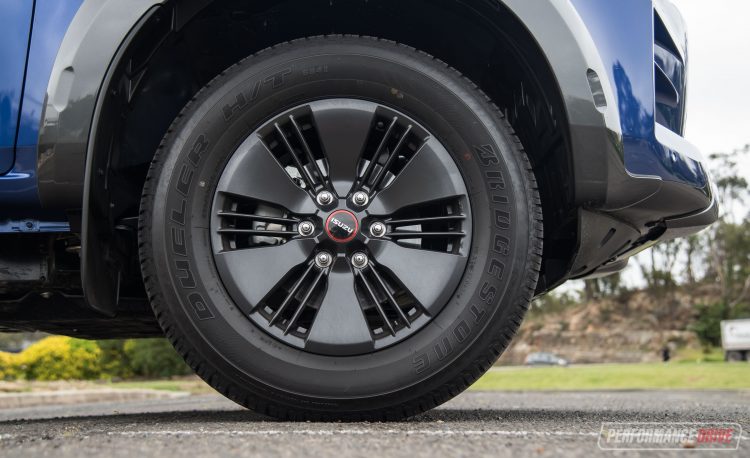
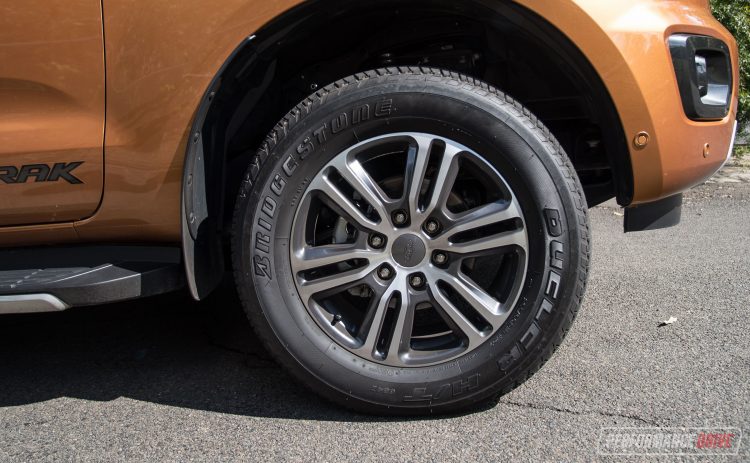
As for the off-road performance, again, these are almost like carbon copies of the template 4×4 ute. Both feature part-time four-wheel drive with on-the-go activation, low-range, and a rear differential lock. Both also use 265/60 highway-terrain tyres mounted on 18-inch wheels.
At the same location, under the same conditions, they were incomparable. About the only difference we noticed is that the rear diff lock seemed to take a bit longer to engage in the D-Max, but on the other hand this D-Max did without side steps which helped provide more clearance over sharp mounds.
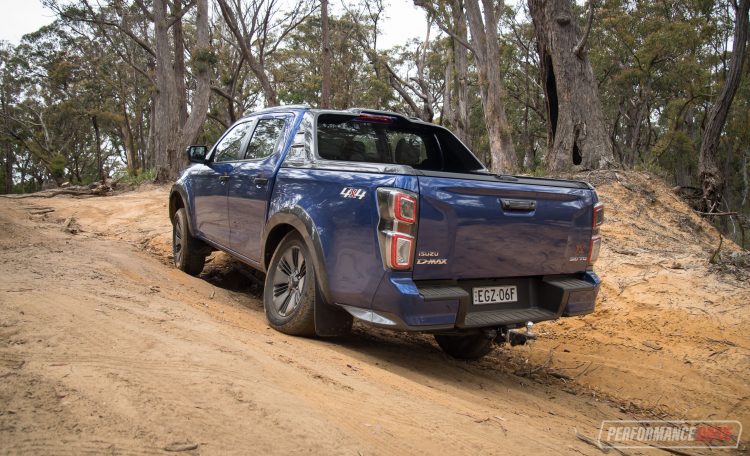
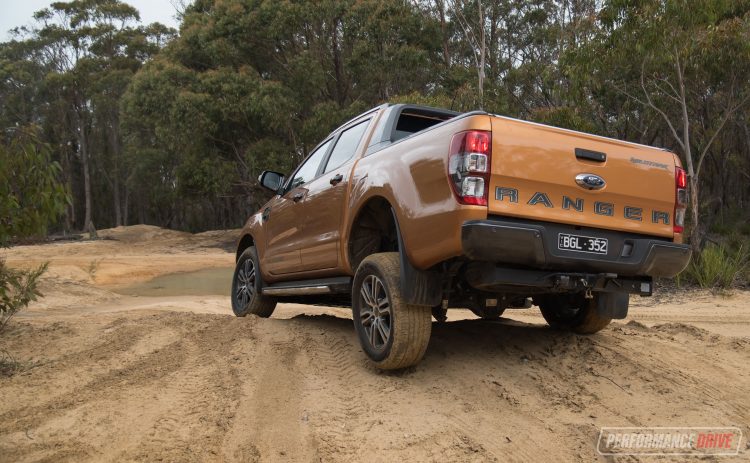
On paper, the D-Max presents 240mm of ground clearance against 237mm in the Ford. The approach angles are 29 and 30.5 degrees, to the D-Max, with departure angles of 21 to 24.2 degrees, again to the D-Max’s favour. Despite featuring a longer wheelbase than the D-Max, the Ranger somehow offers a more attractive break-over angle of 25 degrees compared with 23.8 degrees.
2021 Isuzu D-Max X-Terrain vs Ford Ranger Wildtrak – THE VIDEOS
2021 Isuzu D-Max X-Terrain vs Ford Ranger Wildtrak – THE VERDICT
This really is a case of eeny, meeny, miny, moe. What design appeals to you the most and how does the packaging shape up with your priorities? That’s what it comes down to.
For us, we’re not a fan of Isuzu’s latest active safety systems, which seem far too sensitive in our opinion, and the touch-screen system feels a bit more intuitive in the Ford despite there being a larger screen in the D-Max. We’d probably trust the D-Max more, what with its six-year warranty plan and less complex six-speed auto and single-turbo engine. In the end we really don’t think you can go wrong with either of these options.
If this were a points game, we’d have to hand the win to the D-Max because it does offer added safety tech, more attractive warranty, and the price tag is lower. But we can totally understand why some buyers will go for the Ranger; it looks tough, offers more grunt, and has that awesome power roller shutter in the back. It is perhaps the more fashionable choice as well. If that holds any value.
What does the Isuzu D-Max do better?
- Six-year warranty
- Modern/stylish design, especially the interior
- 3.0L engine capacity better suited to towing
- Gross combination mass/lower kerb weight leaves more flexibility
- Offers more active safety tech, includes low and high speed AEB
What does the Ford Ranger do better?
- Official fuel economy; 7.4/100km vs 8.0L/100km
- Power-operated roller shutter
- Ride quality and on-road handling just edges ahead
- More intuitive touch-screen media interface
- More grunt and a tad quicker
As always, if you’re thinking about buying a new car don’t forget to click here to speak with our car buying specialists.

